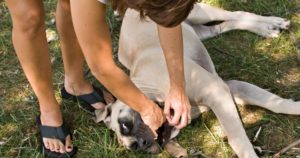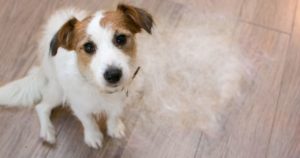Dogs are humanity’s oldest friend. Throughout history, we’ve bred our canine companies for a variety of purposes and appearances. Some dogs work. Others hunt. And some dogs are bred to be really, really small.
Teacup dogs are pint-sized pooches which can bring a lot of joy. But they also have a variety of unique care challenges which make them quite different than other dogs.
Whether you’re interested in welcoming a teacup dog into your life, or if you already have, here’s a complete rundown of everything you need to know:
What are Teacup Dogs?
Teacup dogs aren’t just small, they’re the smallest. The name derives from the idea that the dog is so small, it can comfortably sit inside a teacup. And that’s not an exaggeration. Many of these tiny pups easily fit into literal teacups, although most owners carry their teacup dogs in purses and other small handbags.
The term “teacup” has no official measurement. You won’t find the label on any official breed registry. However, most breeders and experts consider a teacup dog to be:
- Under 17 inches in length
- Under five pounds in weight
That’s the size for an adult dog (12 months and up). Basically, teacup dogs aren’t just small, they’re small for their breed.
The Difference between Teacup Dogs and Toy Dogs
Teacup dogs are different than toy dogs. A toy dog is an official group recognized by the American Kennel Club and other major dog organizations. Toy dogs include a variety of small breeds such as Maltese, Japanese Chins and Manchester Terriers.
Toy dogs were bred to be small for specific purposes such as working or hunting. Today, most toy dogs are lap dogs well-suited for smaller living spaces such as apartments.
Toy dogs are small – but not as small as you may think. Some larger toys can weigh up to 15 pounds. These relatively large dogs aren’t used for teacup breeding purposes.
How are Teacup Dogs Bred?
Teacups dogs aren’t just “small dogs.” They’re specifically bred for size. The smallest puppies from two litters are bred together.
Of course, some breeds become teacups easier than others. You can’t breed two smallish German Shepherds together to get one which will fit in the palm of your hands. Most teacups are bred from toy breeds.
The word “teacup” is used to identify a teacup dog. Examples include a “teacup Pomeranian,” “teacup Poodle” and so on. While that probably sounds obvious, it’s often overlooked. For example, some Pomeranians can grow up to weigh over 10 pounds. That would be quite a surprise if you were expecting a teacup Pom.
Unfortunately, teacups and toy dogs look basically the same at birth. They just grow to different sizes. Only buy teacups from a reputable breeder. A year down the road, you don’t want to discover you were sold a toy instead of a teacup.
What are the Benefits of Owning a Teacup Dog?
Little dogs can bring big joy into your life. Here’s a look at why you might want a teacup dog:
Teacup Dogs Don’t Require a Lot of Space
They’re great if you live in an apartment or don’t have a yard. Most teacup (and toy dogs, for that matter) can get plenty of exercise indoors.
Teacup dogs benefit from fresh air, but they don’t require long walks through the neighborhood each day. Playing some fetch or tug-of-war inside the house is enough to keep them healthy. They’re an ideal choice if you have mobility problems or otherwise are unable to take a dog on a daily walk.
Teacup Dogs are Easy to Travel With
You can find a wide variety of teacup-friendly bags to carry your dog, his food, water, and other supplies. They’re easy to use on road trips and air travel. Most airlines allow you to bring your teacup dog along as a carry-on (of course, check with your specific airline beforehand).
However, not every type of bag is safe or suitable for a teacup dog. You can’t let them hang out in the purse you use every day.
Only carry your teacup dog in a bag which doesn’t contain other items (a small blanket is fine). Store loose items elsewhere. Keys, comb, makeup and many other common items can accidentally injure a teacup.
Most bags designed for teacup dogs will have a large compartment for the dog and smaller compartments for food, a water bowl, etc.
Teacup dogs don’t require a ton of gear. Their water bowl, food bowl, and toys are all relatively small. Plus, although small dogs eat often, they don’t eat much. Basically, everything you need to care for your dog for about a week can easily fit into a teacup carry bag.
Additionally, teacup dogs are easy to carry into stores, restaurants, and other public places. Of course, dogs of any size aren’t welcome everywhere. But you’ll find most establishments will give you some leeway if your dog is small and safely contained in a bag.
Teacup Dogs make Great Watchdogs
Don’t let their small stature fool you. Teacup dogs are great at keeping you and your family safe. They’re loyal protectors with great hearing and a willingness to confront unknown noises. You might be surprised at how loud a teacup dog can bark!
Even better, would-be intruders will have no idea your dog is only a few pounds. Barking dogs are a major deterrent to burglars. The noise, not the size of the dog, is what matters.
Teacup Dogs are Big Fun
These tiny dogs often have big personalities! They can be loving, loyal companions. Teacup dogs usually become very attached to their owners – and vice versa.
Tiny dogs often have a reputation as being yappy and vicious. Fortunately, that’s far more related to training instead of natural temperament. If you raise your dog not to bark and bite, he’ll be well-mannered and friendly for life.
Plus, teacups are adorable. There’s no denying many people choose teacup dogs for their looks. They’re some of the cutest dogs around!
What the Disadvantages of Owning a Teacup Dog?
Unfortunately, teacup dogs are prone to a variety of unique health problems. Most are genetic issues related to the teacup breeding process.
The smallest dogs from a litter sometimes aren’t just small for no reason. They’re often small because they have health problems or birth defects. Breeding two dogs with health issues often result in offspring with even more problems. Teacup breeders shouldn’t favor a small size over health issues – but unscrupulous ones do.
Common conditions to watch for include:
Hypoglycemia
Teacup dogs burn through energy quickly. They need to eat small meals frequently throughout the day. Otherwise, their blood sugar can drop below normal levels. The smaller the dog, the greater his risk of developing hypoglycemia.
Initial symptoms include shivering, clumsiness, weakness, tiredness and frequent head tilting. However, a hypoglycemic dog also can quickly pass out or have a seizure.
If your dog shows any signs of hypoglycemia, feed him his normal food immediately. Also, don’t let your dog skip a meal. They should eat about every three hours. (We’ve got more info on feeding later on in this guide.)
Cold Sensitivity
Many teacup owners like to dress their dogs in sweaters and other gear. While style is undoubtedly motivation for many, warm clothing actually has a more tangible benefit, too.
Teacup dogs often have trouble staying warm. Blame their small size and high metabolism. They’ll need to wear a coat or other clothing in cold weather.
Brittle Bones
Unfortunately, their small bones snap easily. Even a jump or fall from a relatively small height can break a bone. Little dogs don’t always accurately judge their capabilities, so it’s up to you to make sure they don’t jump down from anywhere too tall. This not only includes outdoor surfaces but also indoor situations like tables or shelves.
Also, little dogs are hard to see. You don’t want to step on your little friend accidentally! Pay extra attention when walking around your house at night. Be sure any guests to your home are aware of your teacup dogs. Folks without a small dog of their own might not be used to watching where they walk.
Along those same lines, sliding kneecaps are another common problem for teacup dogs. Called patella luxation, the kneecap pops out of place. It affects a dog’s ability to walk. Patella luxation also increases the dog’s chances of developing arthritis.
Teacup dogs have an increased risk of developing osteoporosis and mineral deficiency. These problems are more likely to occur with age. The right amount of exercise and a healthy diet might relieve some of the symptoms of these conditions.
Difficulty Healing
Aside from being a bit more fragile than larger dogs, teacups also face issues when recovering from injury or illness. Unfortunately, they’re far less likely to survive serious accidents, falls, dog attacks or other traumas.
Surgery is riskier, too. The teacup’s low blood sugar and body temperature act as a double whammy in the operating room. Plus, surgery is more difficult simply because the dog’s organs and blood vessels are so small. Special precautions about time and temperature must be taken to ensure surgical success.
Respiratory Issues
Little dogs can struggle to breathe properly. There are three common issues:
- Dyspnea
- Tachypnea
- Collapsing trachea
Dyspnea is a condition which causes labored breathing and shortness of breath. Teacup dogs often develop dyspnea due to genetic abnormalities like narrowed nostrils and an elongated soft palate.
Tachypnea is a condition where the dog’s rate of breathing increases. Unfortunately, fast breathing is often shallow breathing. A dog with tachypnea will typically feel tired and even anxious.
Also known as a windpipe, the trachea is a cartilage tube which moves air in and out of the lungs. Small dogs are often born with trachea problems. The main sign of tracheal collapse is a dry, honking cough. Blue gums and breathing problems are other common signs. Although tracheal collapse is serious, it’s also usually easily treated with antibiotics.
Dental and Gum Issues
Baby teeth often have difficulty falling out naturally. Your vet might have to remove your teacup dog’s primary teeth to create space for emerging permanent teeth. Teacup dogs have small mouths, which leads to their teeth being placed together more closely.
This can cause a number of dental issues in the long run. Because there’s less space between their teeth, plaque can build up easily, which can lead to subsequent decay and other dental issues. While larger dogs can naturally clear out this plaque while chewing their food, teacup dogs have tiny jaws that don’t have the strength to do so.
Additionally, teacup dogs are susceptible to cavities. Their tiny teeth are difficult to keep clean naturally. You’ll want to make sure your dog has regular dental check-ups to ensure that they can enjoy a healthy set of teeth throughout their life.
Birth Defects
Breeding for size allows a lot of genetic conditions to be passed down from parent to child. Liver shunts, a condition which impairs the liver’s ability to eliminate toxins, are common. Liver shunts aren’t just dangerous; they’re expensive to treat. Therapy can cost up to $6,000.
Other hereditary problems to watch for include:
- Hydrocephalus – a brain condition
- Heart defects
- Blindness
High Price
While this isn’t a health problem, it’s still something potential owners should consider. Teacup dogs are often expensive. You can expect to pay several hundred or even several thousand dollars.
Unfortunately, the high cost can indirectly contribute to health problems. Breeders know they can make lots of money selling teacups. Some breeders don’t care much about the health of the dogs; they only care about their size. Only buy a teacup from a trusted breeder who can supply a thorough health history for the dog.
How Do I Feed a Teacup Dog?
Teacup dogs need to eat more frequently than larger dogs. Generally, you should feed your teacup dog a small meal every three hours. Large meals should be avoided, as teacup dogs might overeat and suffer from gastric distress.
Consult the instructions on the label for the specific amount to feed. While not all labels will come with instructions specifically for teacup dogs, every meal that they’re fed should be slightly less than the portion sizes mentioned for small dogs.
Some brands will give you the option for Karo syrup for the dog’s diet. This is an important ingredient because of the genetic low blood sugar in teacup dogs.
Dry food is the best option. The texture of the kibble helps remove plaque and buildup when chewed. Wet food can easily become stuck between small teeth which increases the risk of cavities. Because teacup dogs are already prone to dental problems, most experts recommend feeding them dry food instead of wet. This would also make it easier for you to clean their teeth.
The main ingredient in the food should be meat. Avoid foods where the main ingredient is a by-product, such as “chicken by-product.” That’s not really meat. It’s a mixture of bones and organs which doesn’t have the same amino acids found in lean protein. Considering the kind of health issues that teacup dogs face genetically, meat-based products should be the main source of their nutrition.
Some more factors you need to keep in mind is the inclusion of plenty of fiber in your puppy’s diet. Because of the genetic predisposition and the small size of these animals, it should be ensured that their digestive cycles are fairly regular. The correct amount of fiber in their diets will ensure that their food gets digested completely and properly.
If you have a small bowl at home from which your puppy is going to drink, make sure it’s refilled regularly with clean water. Teacup dogs are known for playing hard and exhausting themselves out. Having their play and diet times properly fixed will ensure that they get on a daily schedule, ensuring better long-term health.
Final Thoughts
Teacup dogs aren’t like other dogs. While they’re easy to care for because of their small size, can easily be taken on your trips because they don’t take a lot of space, and make for great lap dogs, there are some disadvantages that you need to keep in mind before you decide to get one.
Their size presents many unique challenges. They have the tendency to be affected by medical disorders like respiratory issues, cold sensitivity, and brittle bones. However, with the right care and training, a teacup dog can be a wonderful companion to bring along with you wherever you go.
In this article, we discussed what are teacup dogs and the pros and cons of owning one. If you’re a dog owner (or are looking to get yourself a furry friend), feel free to check out the other articles on our website!






